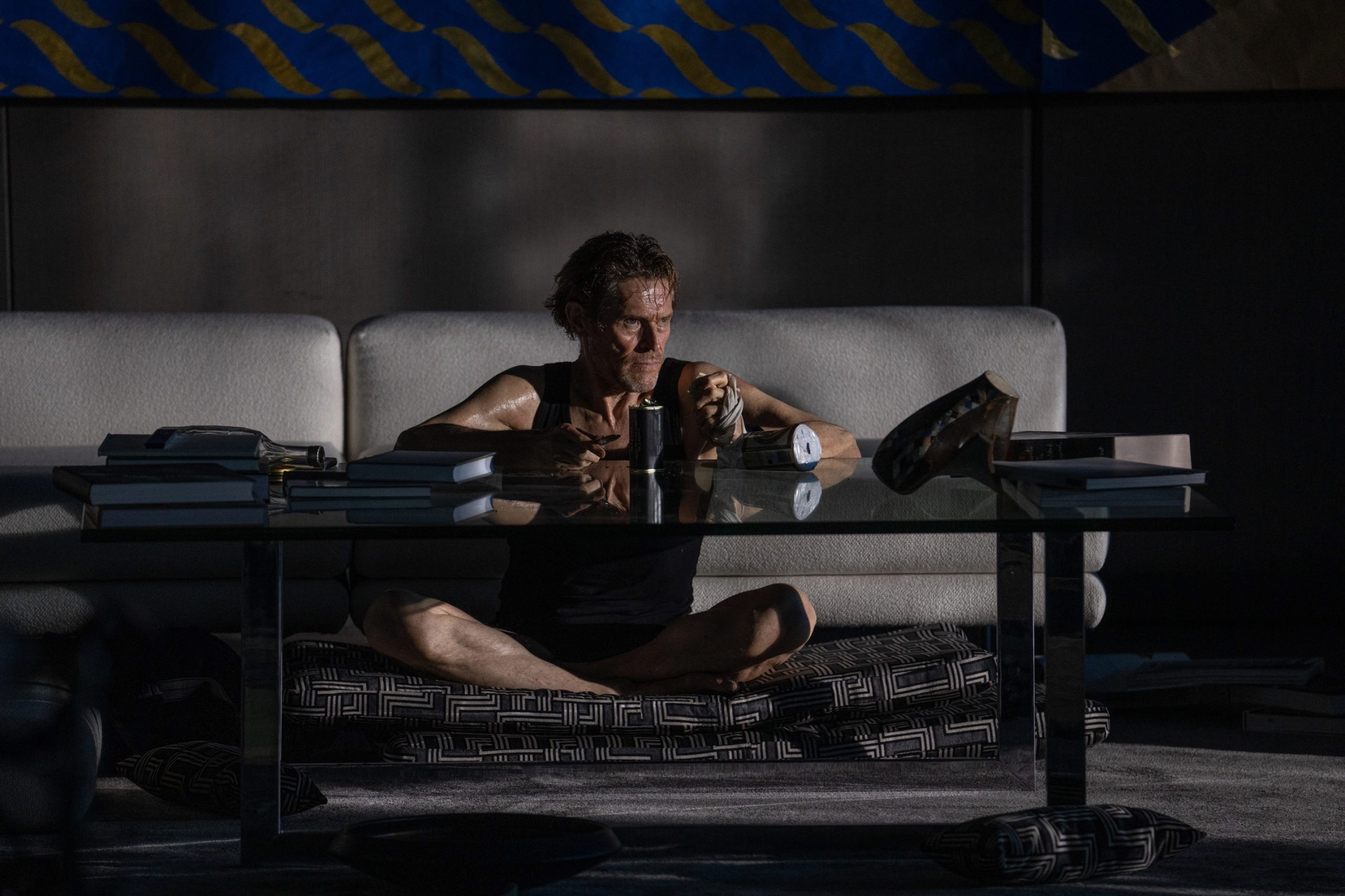Inside is a film about art: creation, destruction, and sadly meaningless tedium. Willem Dafoe is Nemo, an art thief whose latest heist falters when he gets trapped inside a collector’s luxury apartment, high in the skies of New York. He is locked inside and left looking for a way out of his artsy prison. Soon you’ll want to leave too.
Inside is at its most interesting when it focuses on the small parts of Nero’s attempted escapes. He chips away at wooden doors, repurposes chair legs as large wooden spanners, and creates something of his own. We see both destruction and creation here. However, this theme finds itself lost in the theatrics of Nero’s struggle to survive.
After Nero is locked inside, he quickly breaks the central control system, causing wild fluctuations in temperature. What follows is around 90 minutes of him dealing with being either too hot or too cold, and facing up to his desperate lack of food and drinking water. Its focus on his mere survival diminishes any commentary that Inside could be making on the artistic process. Instead we’re left watching Dafoe eat dog food and suck water out of a freezer.
As a piece of commentary, it has nothing to say beyond visually pleasing but hollow visual metaphors. There are no real stakes in whether Nemo escapes or not. Neither is there any notion of him being caught for most of the film. The owners are clearly gone for a while, and it’s established early on that he has no real contact with the outside world. Dafoe carries the film with what little he has to work with but it is never enough.
For a film about the artistic process, neither the journey nor the final piece feel meaningful. Inside bills itself as a psychological suspense drama but there’s no suspense, little drama, and it never gets properly inside your head.
